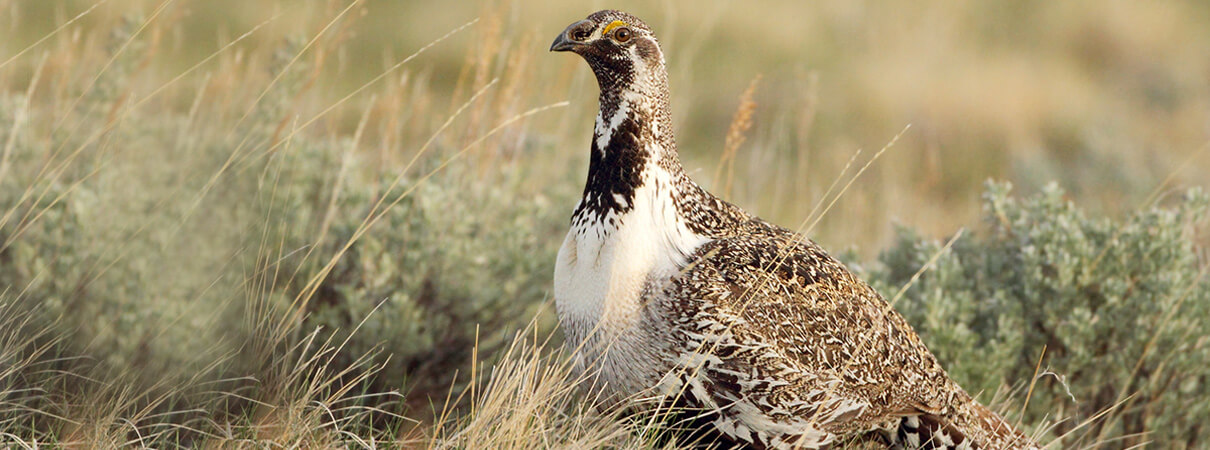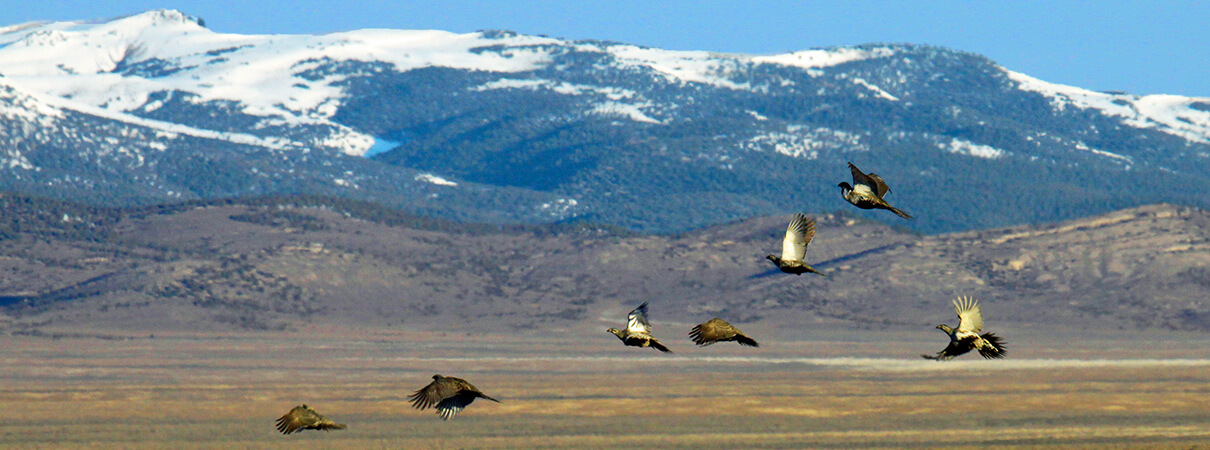Will Federal Policies Doom the Sage-Grouse to Extinction?
Wildlife experts concluded in 2015 that the Greater Sage-Grouse, an iconic bird of the West, did not require listing under the Endangered Species Act (ESA), thanks to then-new federal management plans with added conservation requirements. Many conservation groups, including American Bird Conservancy, supported the monumental process leading up to these plans—and the decision not to list this species under these circumstances.
Clearly, the 2015 plans of the Bureau of Land Management and Forest Service, though a major step forward, were not perfect and could be improved. But the plans did provide a few essential elements, including guiding oil and gas development away from priority habitat and providing protection from mining in the highest-priority habitats, called the sagebrush focal areas.

Greater Sage-Grouse. Photo by Pat Gaines/Flickr
As it turned out, had the beleaguered bird been listed in 2015, we wouldn't now be watching years of effort to save the Greater Sage-Grouse be washed away almost overnight. The many promises to conserve the grouse and its habitat are now purposefully being abandoned as the federal agencies are on the verge of finalizing new plans that remove essential safeguards.
These plans are expected to cancel the prioritization of oil and gas drilling away from priority habitat, along with protections for sagebrush focal areas. Mitigation and adaptive management requirements will be severely weakened. The consistent theme in the revisions to the Bureau of Land Management's and Forest Service's grouse plans is the addition of more oil and gas development, even in priority grouse habitat. In fact, leasing for new developments has already resumed.
Meanwhile, Greater Sage-Grouse populations remain in serious trouble. Recent reports indicate that numbers are declining in Oregon and Montana, and that sage-grouse are nearly extirpated from both North and South Dakota. Neither listed nor protected otherwise, the Greater Sage-Grouse now sits exposed.
American Bird Conservancy and other groups believe this is a watershed moment, a time for action to save this species. We join many other groups in protesting the revised management plans and opposing renewed oil and gas leasing in priority grouse habitat. We are urging the federal agencies to withdraw their flawed revised grouse plans and to restore the earlier widely supported plans, which were endorsed by the states where the grouse is found. We ask that the federal agencies restore the mitigation and adaptive management requirements and fully consider the negative climate impacts of fossil fuel development on public lands.

Greater Sage-Grouse in flight. Photo by Tatiana Gettelman/USGS
We also request that the U.S. Fish and Wildlife Service now conduct a renewed status review of the species to assess the recent population decline and the effect of increased development in grouse habitat. We must determine whether the remaining protections are adequate to keep the grouse from going extinct.
Finally, we ask that Congress remove the ESA listing moratorium on sage-grouse, in effect since 2014. No species should be exempted from the Act for political reasons. Oversight is also needed to ensure that federal agencies keep their promises to protect this icon of the American West. The Greater Sage-Grouse, and the American people, deserve no less.
Citizens can petition Congress in support of Sage-Grouse here.
 | Steve Holmer is American Bird Conservancy's Vice President of Policy and Director of the Bird Conservation Alliance. |


















































